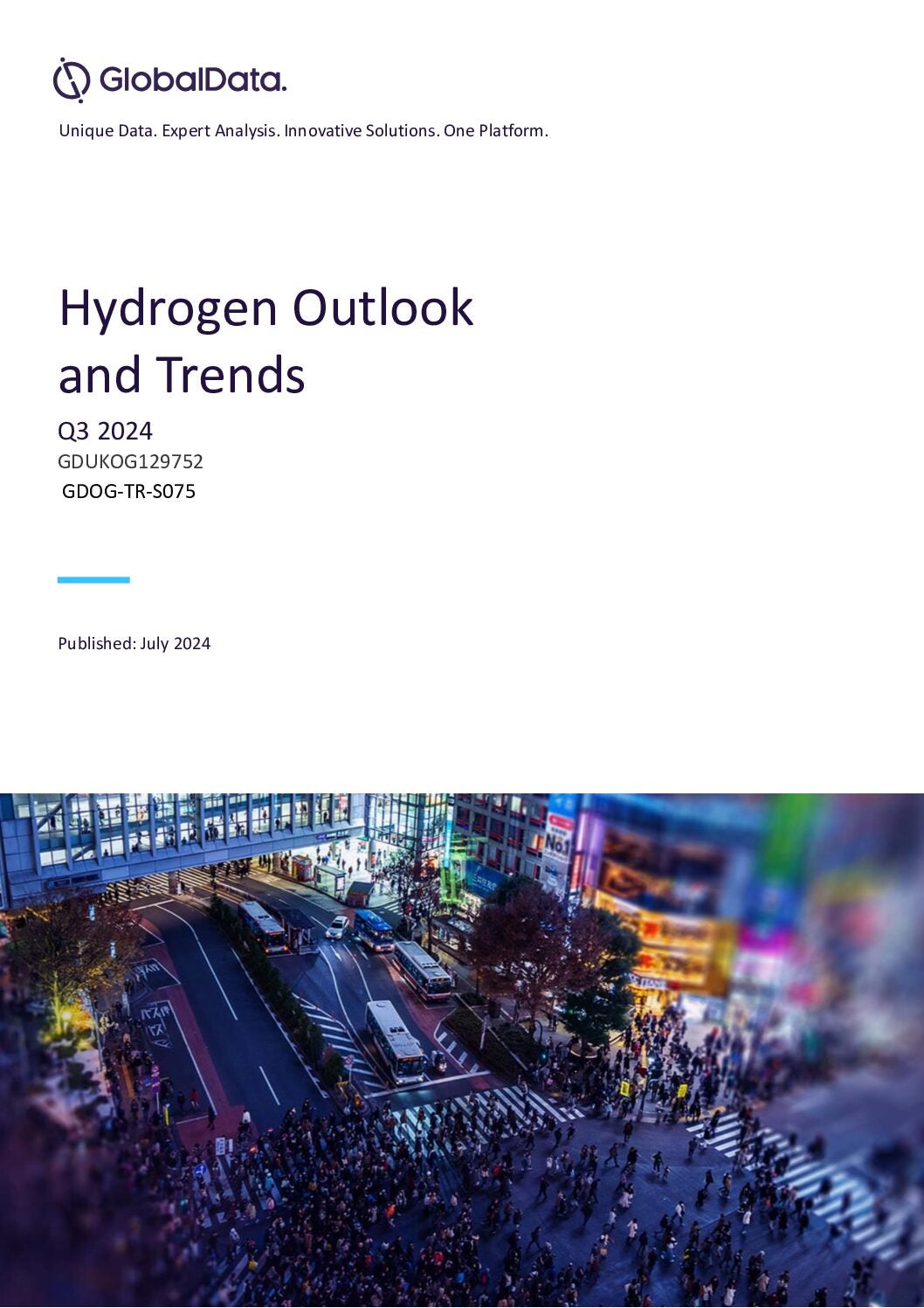
The world is moving towards a clean energy revolution, and hydrogen has emerged as a promising option in the race to net zero. Recognising its potential, the United States has embarked on an ambitious journey to establish multiple hydrogen hubs, supporting both low-carbon and renewable hydrogen, across the country. These hubs are envisioned as networks for hydrogen production, storage, distribution, utilisation, and export, fostering a sustainable energy ecosystem that could transform various sectors, from transportation to industry.
The global supply and demand of hydrogen (primarily fossil-based) reached approximately 90 Mt (million tonnes), in 2020, mostly for oil refining and chemical production. However, the IEA stipulates that low-carbon hydrogen production will need to reach around 530 Mt globally if we are to meet net zero by 2050.
Andres Angulo, energy analyst at GlobalData, comments, “During 2022, over 393 deals related to hydrogen were closed, representing a significant increase compared to 277 deals registered in 2021. This shows an upward trend in the lower-carbon hydrogen market development, which could be decisive in achieving over 111 million tons per annum (mtpa) capacity worldwide by 2030.”
Using hydrogen and hydrogen-based fuels could avoid up to 60 gigatonnes of CO2 emissions by 2050, or 6% of total cumulative emissions reductions, to work in tandem with other cleaner energy options to decarbonise at the rate required.
Yet, despite the high number of partnerships formed between companies as compared to government agencies, investing, raising capital and mitigating risk are of the utmost importance to developing the hydrogen economy.
In the US, and around the globe, hydrogen hubs are being established to facilitate this significant ramp-up in the supply of hydrogen and the need for energy security. But what is the significance of these hubs for the US energy landscape, and how can they ensure that these ambitious goals are met?
Funding and investment for US hydrogen hubs
The Infrastructure Investment and Jobs Act (IIJA) of 2021, also known as the Bipartisan Infrastructure Bill, allocated $1.2 trillion for a range of infrastructure and energy projects, including $9.5 billion for hydrogen programs. $8 billion of this is dedicated to creating Regional Clean Hydrogen Hubs, also known as H2Hubs, which will be a central driver in helping regions across the country benefit from clean energy investments, job opportunities and improved energy security.
The Inflation Reduction Act (IRA) of 2022 is a production tax credit for cleaner hydrogen, with the credit amount varying according to the carbon intensity (CI) of hydrogen produced. The maximum credit is $3/kg, which can be given to renewable hydrogen that is produced by methods that emit 0.45 or less of kgs CO2/kgs H2. Lower credits are available for hydrogen produced by methods that emit up to 4.0 kgs CO2/kgs H2. This will lower the cost of lower- carbon hydrogen production, making it more attractive to investors as well as more commercially viable.
Furthermore, the Department Of Energy National Clean Hydrogen Strategy and Roadmap released in June 2023, looks at pathways for clean hydrogen use to 2050 and sets out key strategies, including focusing on regional hydrogen hubs.
According to Gary Martin, VP of energy transition at Worley and leader in their newly created hydrogen centre of excellence in Baton Rouge, government funding promises to jumpstart a hydrogen economy during the coming decades. “These Acts and Roadmaps are very significant because they will help prove the feasibility,” says Martin. “With successful hubs in operation, private investment will be willing to move forward, and build out the needed infrastructure for hydrogen production, storage, transportation and usage.”
Mitigating the cost of hydrogen transport and storage
With existing technology for producing hydrogen, along with innovations to make the process more efficient, what is the benefit of hubs? Much of this comes down to logistics, as a significant amount of the cost associated with producing and utilising hydrogen relate to transport and storage. Hydrogen hubs typically involve the establishment of co-located hydrogen production and use facilities. Co-locating production with points of use allows for economies of scale and reduces the storage and transportation requirements, making the overall process more efficient and cost-effective.
“If we created a lower-carbon hydrogen economy without hydrogen hubs, you would need to build a transportation network with storage. Because of its physical and chemical properties, hydrogen is particularly expensive, either as a gas or liquid, to transport and store,” says Martin. “That’s the driver behind hydrogen hubs. It’s the most economical way to produce and use hydrogen – where you’re not transporting it and you reduce the need for storage.”
Diversifying hydrogen demand
“Worley works closely with Princeton University,” Martin explains. “Together, we recently presented the second paper in the series known as From Ambition to Reality, which looks at five key shifts that change our thinking and approach to projects. Legislation in the US and Europe works a little differently, but in the US, we’re predominately looking at stimulating the supply side of hydrogen. However, in market economies, you need to match demand with supply.
“One area that hydrogen really shines is in what’s called the hard-to-abate industries. For example, the traditional way to manufacture steel uses coal, which creates a substantial amount of carbon emissions. Steel production could be a great utilisation of hydrogen. A lot of hydrogen applications go further into what we call derivatives, such as making ammonia, e-methanol, or sustainable aviation fuel.”
There are a number of ongoing innovative demonstration projects occurring across a wide variety of sectors. The Caltech Gas Blending Project completed a successful demonstration of up to 20% hydrogen at its testing facility, and the New York Power Authority is testing a blend of natural gas and hydrogen to power the existing gas turbines at its Brentwood power plant on Long Island.
The California Energy Commission awarded GTI Energy and Sierra Northern Railway around $4m to fund the design, integration and demonstration of a hydrogen fuel cell switching locomotive to support the Hydrogen Fuel Cell Demonstrations in Rail and Marine Applications at Ports (H2RAM) initiative.
SoCalGas has also begun building a demonstration house in Downey, CA, equipped with solar panels, a battery, an electrolyser, and a fuel cell to demonstrate closed-loop production and use of hydrogen in the home.
Overall, the US is on the road to net zero. With new uses for hydrogen on the horizon, and successful hubs continuing to prove their worth to private investors, hydrogen is on track to play a vital role in the future of the US energy landscape.
As mentioned in the interview, Worley and Princeton have been working together to create the From Ambition to Reality series. Download the white paper below to find out more.



